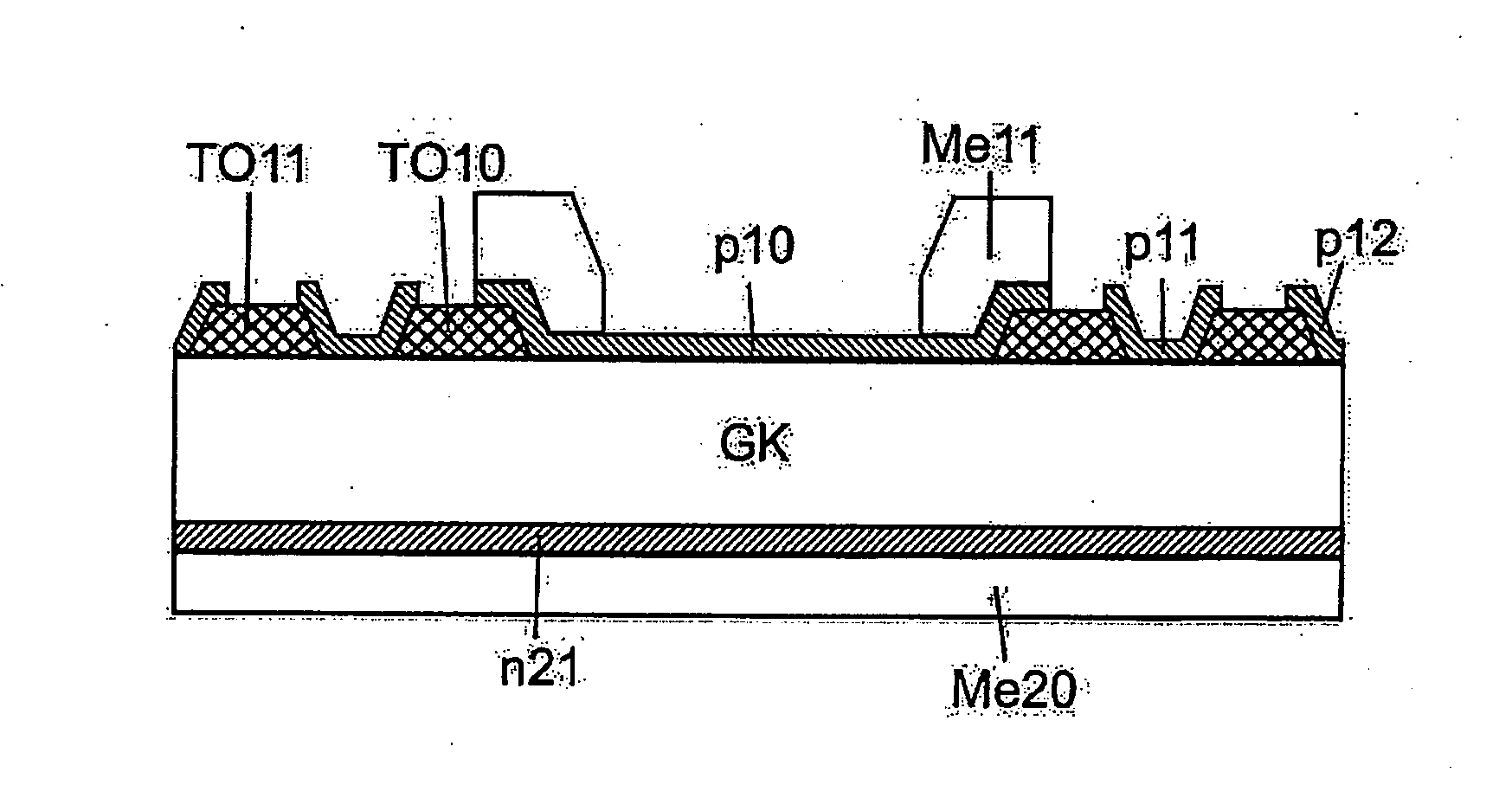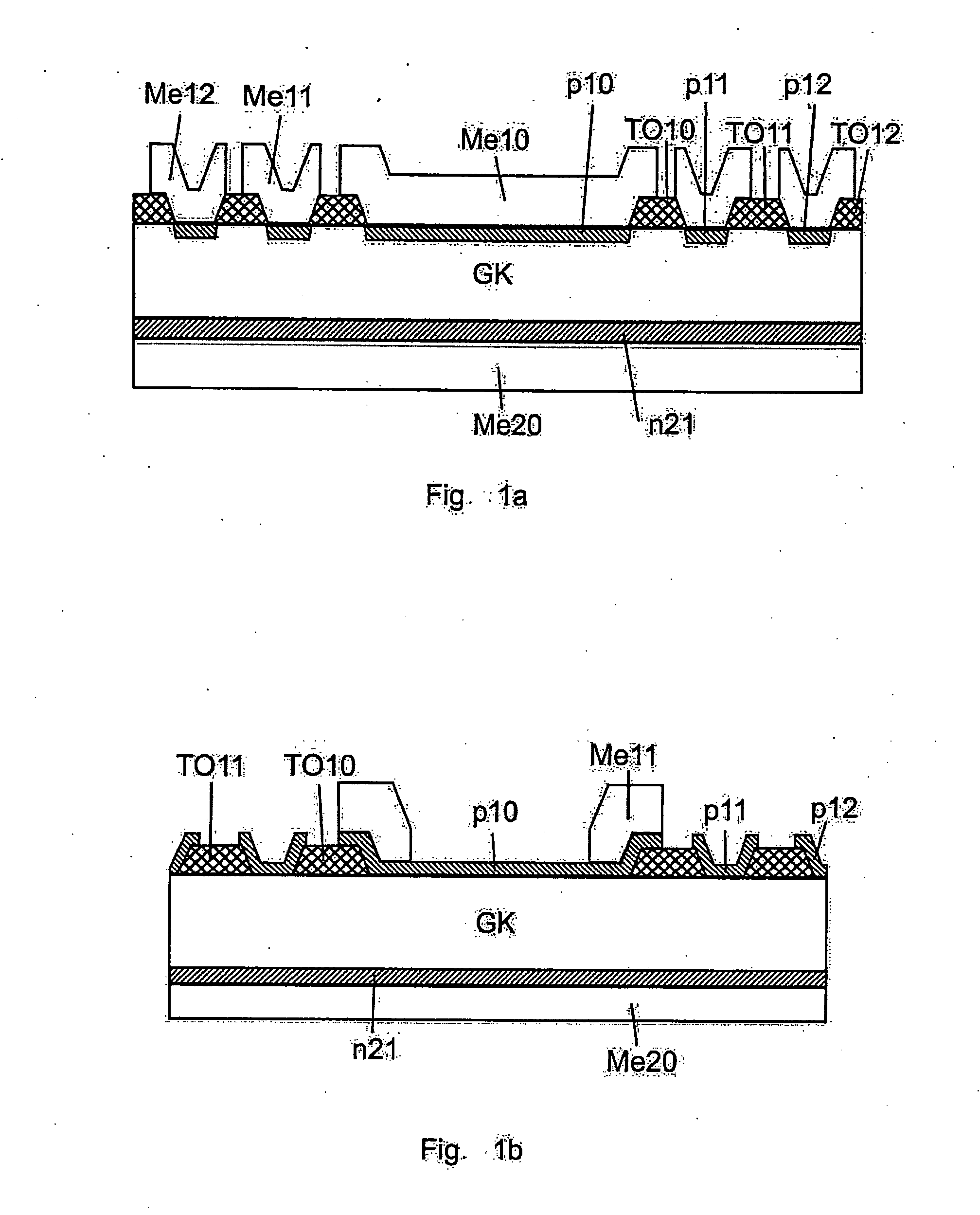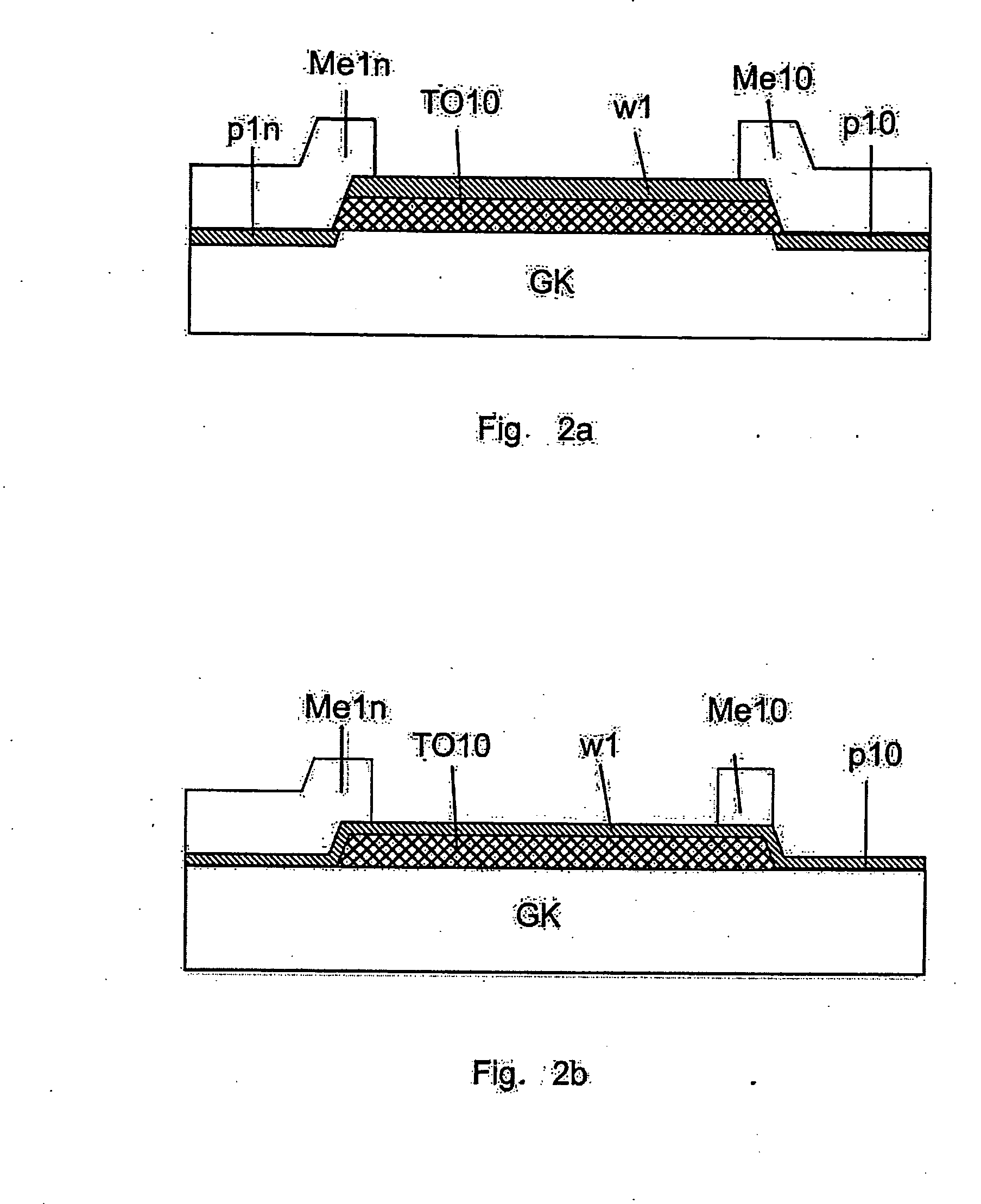Semiconductor radiation detectors and method for fabrication thereof
a radiation detector and semiconductor technology, applied in semiconductor/solid-state device manufacturing, electric devices, solid-state devices, etc., can solve the problems of inability to thin, additional undesirable diffusion of profiles, and crystal damage that needs to be eliminated
- Summary
- Abstract
- Description
- Claims
- Application Information
AI Technical Summary
Problems solved by technology
Method used
Image
Examples
Embodiment Construction
[0029] Like elements are identified by like reference numerals in the following figures to avoid repeat descriptions -of the elements already described in discussing the individual figures.
[0030] Before proceeding further with the detailed description of FIG. 1, however, a few items of the embodiments will be discussed.
[0031] In accordance with the embodiments of the invention it has now been discovered that by applying epitaxy instead of ion implantation for forming the further semiconductor layers of at least one of the second and the first conductivity type on the semiconductor body, all of the above-mentioend drawbacks can be avoided.
[0032] With the aid of a method according to an embodiment it is now possible to vary the layer thickness and dopant concentration within broad limits. There is no problem technically in generating with the aid of suitable epitaxy methods sharp doping profiles, indeed even so-called delta layers. Since doping concentrations up to 10E21 per cm are...
PUM
 Login to View More
Login to View More Abstract
Description
Claims
Application Information
 Login to View More
Login to View More - R&D
- Intellectual Property
- Life Sciences
- Materials
- Tech Scout
- Unparalleled Data Quality
- Higher Quality Content
- 60% Fewer Hallucinations
Browse by: Latest US Patents, China's latest patents, Technical Efficacy Thesaurus, Application Domain, Technology Topic, Popular Technical Reports.
© 2025 PatSnap. All rights reserved.Legal|Privacy policy|Modern Slavery Act Transparency Statement|Sitemap|About US| Contact US: help@patsnap.com



